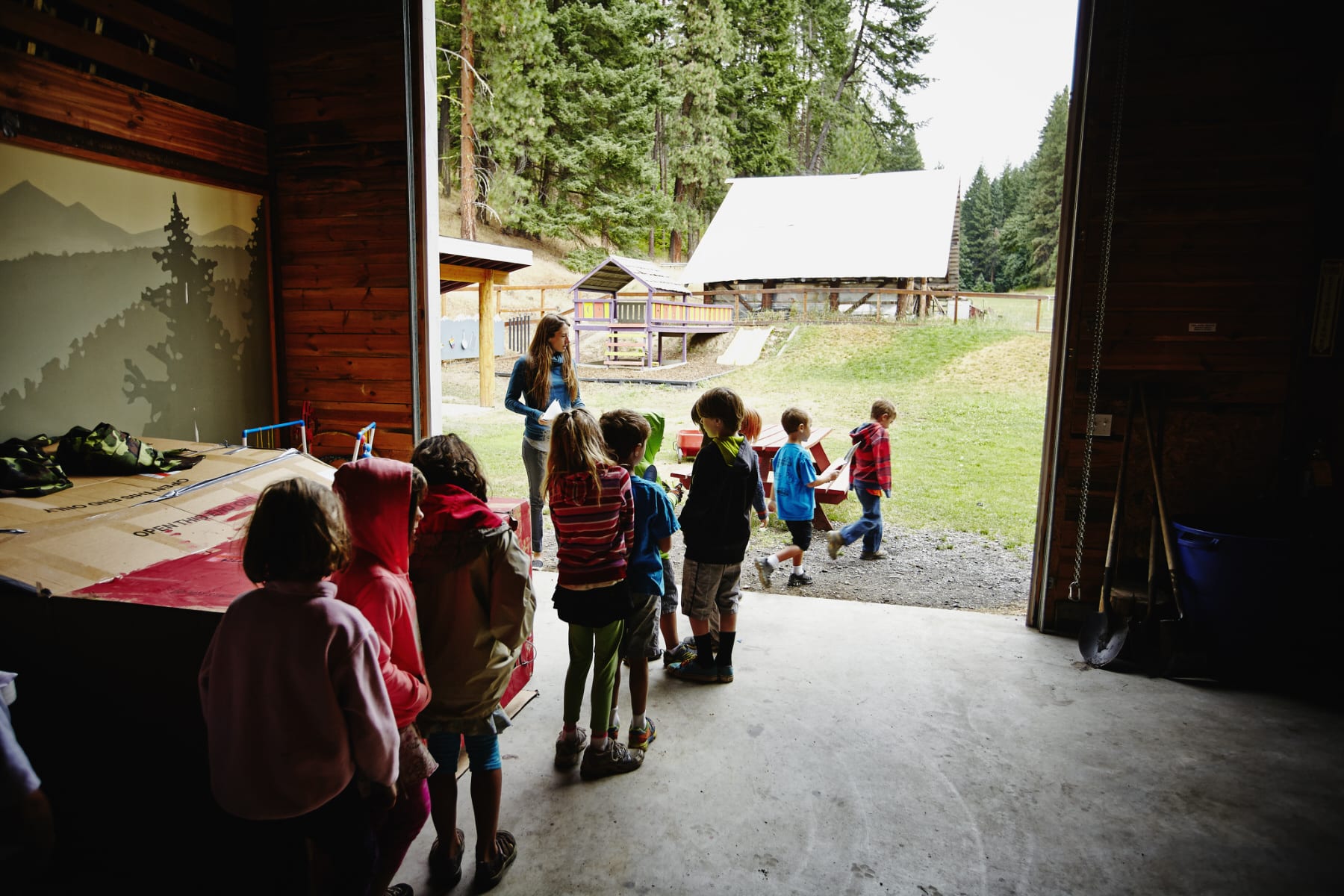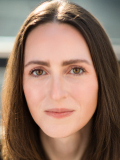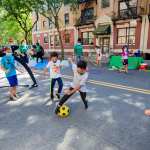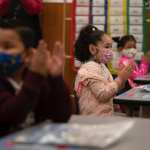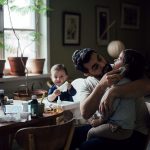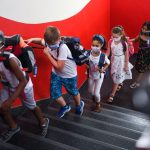Tamar Kapner knew it was a risk to send her three kids to sleepaway camp in North Carolina. After all, she had already opted to keep them learning online after their Atlanta-area classrooms reopened for in-person learning to protect the family from infection.
The camp had strict rules, requiring everyone to quarantine at home for two weeks before starting. Kids needed a negative PCR test 72 hours before the first day of camp and also underwent a rapid COVID-19 test at drop-off before they could board the bus. All campers and staff were tested again after day five and day 10. After the entire camp received negative PCR tests the second time, masks were allowed off for the remainder of the session.
Zero cases of COVID were reported at the camp all session.
“Sending my kids to camp was truly based on a gut feeling that [the camp] would get it right,” Kapner told The 19th. And when the strict rules were rolled out, she was relieved. “Once I saw their protocol, I knew they were getting it right. If at any point I had thought they weren’t creating a good, safe program, I wouldn’t have sent them.” She made sure her two vaccine-eligible children were fully inoculated, and her youngest joined for the first time.
In many ways, Kapner’s family was lucky. This summer there have already been reports of massive COVID outbreaks at camps in Texas and in Illinois. Additional levels of protection, such as those employed by Kapner’s kids’ camp, were not in place, either. In addition to the rigorous COVID testing, the camp in Hendersonville, North Carolina, kept kids in strict pods. The dining hall was relocated to a tent for ventilation. Nobody was allowed to leave camp, not even counselors and staff. Every adult staff member was required to be fully vaccinated. Even care packages were banned this year to limit the number of delivery people who would ever need to be on site.
In both Texas and Illinois, COVID protocols were more lax, with the camps requiring neither indoor masking nor confirmed vaccination status. Additional levels of protection, such as those employed by Kapner’s kids’ camp, were not in place, either. These additional safety measures can be difficult to employ for a number of reasons, from cost to pushback from parents.
And camp isn’t free. For those who have already had to find ways to juggle work and childcare during the pandemic, camp might be a luxury — and an unnecessary added stress and risk factor.
“If you have figured out some way of making things work for a time, would you put your kid into camp so you can go to the office? And then what if the camp closes because of COVID and your kid is back at home and so are you and you lose your job as a result?” asked Gina Adams, a senior fellow at the Urban Institute and the director of the group’s Low-Income Working Families and Kids in Context initiatives. “You’ve already gotten through all this volatility. If you’re in a safe space now, you’re probably just going to hunker down now until school starts, and then pray that school stays open.”
This is exactly what Fatima Shama, executive director of The Fresh Air Fund in New York City, found of the families she serves. The Fresh Air Fund provides summer programming for low-income and historically underserved communities in New York.
Last summer, the organization ran a number of virtual programs and a handful of outdoor activities for their participants. In the late fall of 2020, the group asked a panel of teenage participants whether they would prefer to return to the group’s traditional residential summer camping programs or remain virtual.
“Kid for kid, every single person at the panel said, ‘It would be safer for us to do virtual,’” she said. The teenagers told Shama they worried about bringing home COVID to a grandparent or other relatives living with them who were otherwise high-risk.
Shama also noted that 26 percent of the families her group serves identify as Asian; in addition to health concerns tied to COVID, many campers have also expressed fear returning to outdoor activities because of xenophobic attacks in New York City.
Ultimately, The Fresh Air Fund decided to not return to their traditional, residential sleepaway camp model. It has built on the virtual programming from last summer and added to outdoor programs directly in the neighborhoods of the families it serves. Even now, though, she says, she has seen kids dropout or not accept placement in their outdoor programs out of safety concerns.
In her own research, Adams has found that families with lower incomes relied more on family support during the summer months than they did the school year. Conversely, families with resources spent more on child care in the summer — and their children had more access to learning resources as a result. “If you can afford to buy summer care then you did, and if you didn’t have the resources to buy that care, you didn’t,” Adams said her own research showed.
All these things kids lost, we are able to work on rebuilding again.
Lauren Wexler, director of camps for the 92nd Street Y in New York City
Those who already traditionally face challenges when it comes to finding care for their children in the summer are now looking at even bigger challenges, Adams said. Communities of color — and Black and Latinx families in particular — are at much higher risk for getting COVID.
“If you are a program that doesn’t have the resources to get into place the PPE and training and protocols that we are seeing at these places that do have resources, then yes, your kid is at risk” in attending one of them, said Adams.
She added that evaluating multiple different camps’ safety protocols is yet another onus placed on parents who are already juggling too much, especially those in lower-income families. This added workload might keep these families’ children out of camp, even if there were a high-quality and affordable option available to them.
For camp directors, safety remains an ever-continuing conversation with parents.
“For us, it was about figuring out what we were comfortable with and where our families would be comfortable,” Lauren Wexler, director of camps at the 92nd Street Y in New York told The 19th. Through the American Camping Association, she attended webinars and news sessions with physicians, and was constantly in touch with other camp directors on their plans for the summer. For months before the start of camp, she hosted monthly sessions with families to update them on her day camps’ plans and protocols, sharing information about everything from camper pods to bus seating.
Many families asked to speak with her individually. “One family would say, ‘I only want to send my kid if they’re masked the entire time’ and then the next call would say, ‘I’m only sending my kid if they don’t have to wear a mask,’” Wexler said. “We had to make decisions as a camp about where we were comfortable and where was the science in all of this.”
Ultimately, the camp decided to keep kids masked for all indoor activities, unmasked for outdoor activities, and create pods and seating charts for buses to enable easy contact tracing if need be.
Since the Y’s day camps started the last week of June — and have every element of their COVID protocol reviewed by a physician — she says she’s relieved that the bulk of calls she’s gotten from parents have been “about normal camp stuff: lost and found, cuts and scrapes.”
And where the line falls on safety protocols remains unclear, even in states known for stricter rules regarding the pandemic.
Hayley Samen is the associate producer of Stagedoor Manor, a prestigious performing arts overnight camp located in New York’s Catskills. She told The 19th that when COVID first emerged last spring, they almost immediately made the decision that it wasn’t safe to open camp in person for the summer 2020 season. Instead, they ran a camp program online. Starting in September, though, she began planning the camp’s COVID protocols so that they could find a way to reopen in person.
She began having weekly COVID task force meetings with the camp’s nurses and full-time staff and personally oversaw what would become their in-house COVID testing program. At the same time, she kept an eye out for guidance from New York State’s COVID task force. It never came. She ultimately was able to independently connect with a lab, ensure HIPAA compliance, and create a testing and reporting protocol without any advice from the state. Even now, after multiple requests, she still does not have any information on how to report her findings to them. “We’ve had to figure it all out ourselves,” she said.
The camp leaders settled on a protocol where all campers and staff needed to arrive at camp with a negative PCR test and wear masks at all times during the first five to seven days of camp. Then, the entire camp would be given a rapid test at that point. If everyone tested negative, the masks could then come off.
So far, they’ve gotten mostly positive feedback from families on their COVID protocols.
Still, some complaints came from parents whose children were already vaccinated. “When I start hearing from people who ask, ‘Why can’t we just open up [without masks and testing], I bring up the Delta variant. I remind them that Delta is out there and it’s aggressive and our entire camp isn’t vaccinated yet.”
While Stagedoor Manor’s staff is fully vaccinated, not all participants have received both doses yet, with some younger campers not yet eligible for vaccination at all.
As summer progresses, many of the more cautious directors are seeing their plans pay off.
Wexler said that the most rewarding part of the 92nd Street Y’s summer season so far has been getting to see kids work on the skills that so many were denied the chance to refine last year.
“They’re learning how to make a friend,” she said. “They’re learning how to share, how to compromise. All these things kids lost, we are able to work on rebuilding again.”
For Samen, up in the Catskills, this year’s precautions have been more than worthwhile. “They’ve been in quarantine for almost two years now — that’s too much for adults, yet alone children. When the kids got to take their masks off for the first time, I sobbed. We’ve been working on this for a year and we did it. The kids are safe.”
